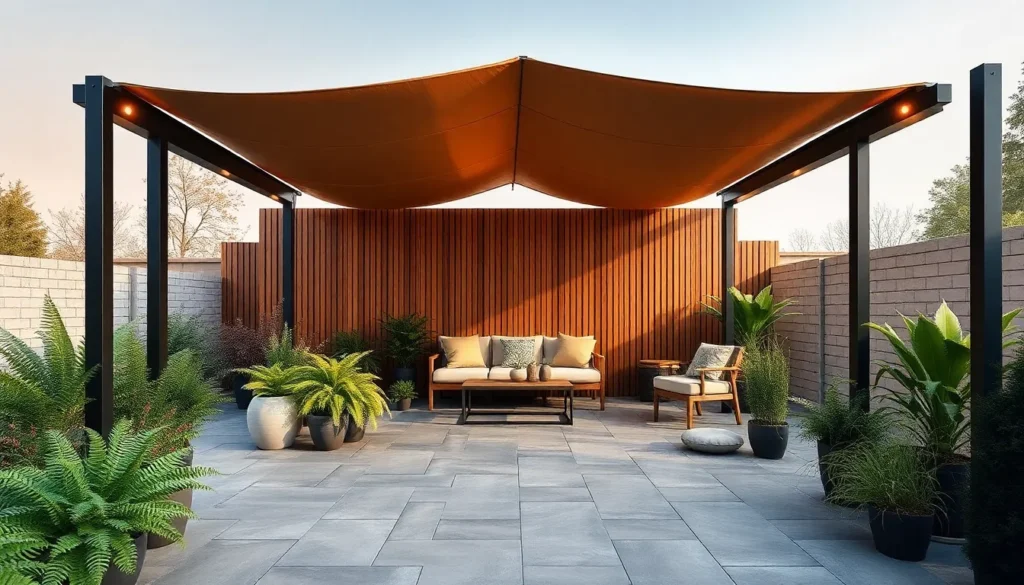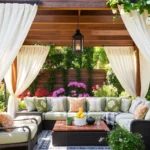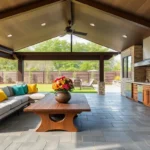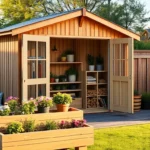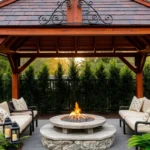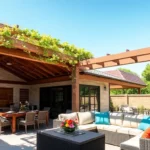Transforming your backyard into a haven that thrives in any weather is not only possible but immensely rewarding. Whether you’re just starting out or have been cultivating your outdoor sanctuary for years, understanding the value of weather-resistant structures is key to enjoying your space year-round. These versatile shelters promise not only protection from the elements but also add a touch of style and function, turning any patio into a cherished extension of your home.
In this article, you’ll discover ten remarkable outdoor structures designed to withstand the unpredictable whims of nature. From innovative pergolas to all-season gazebos, we’ll explore options that cater to various styles and budgets, ensuring that your outdoor living area remains comfortable and inviting, come rain or shine. By the end, you’ll be equipped with the insights needed to choose the perfect structure that aligns with your vision and lifestyle.
Choosing Durable Shelter Materials
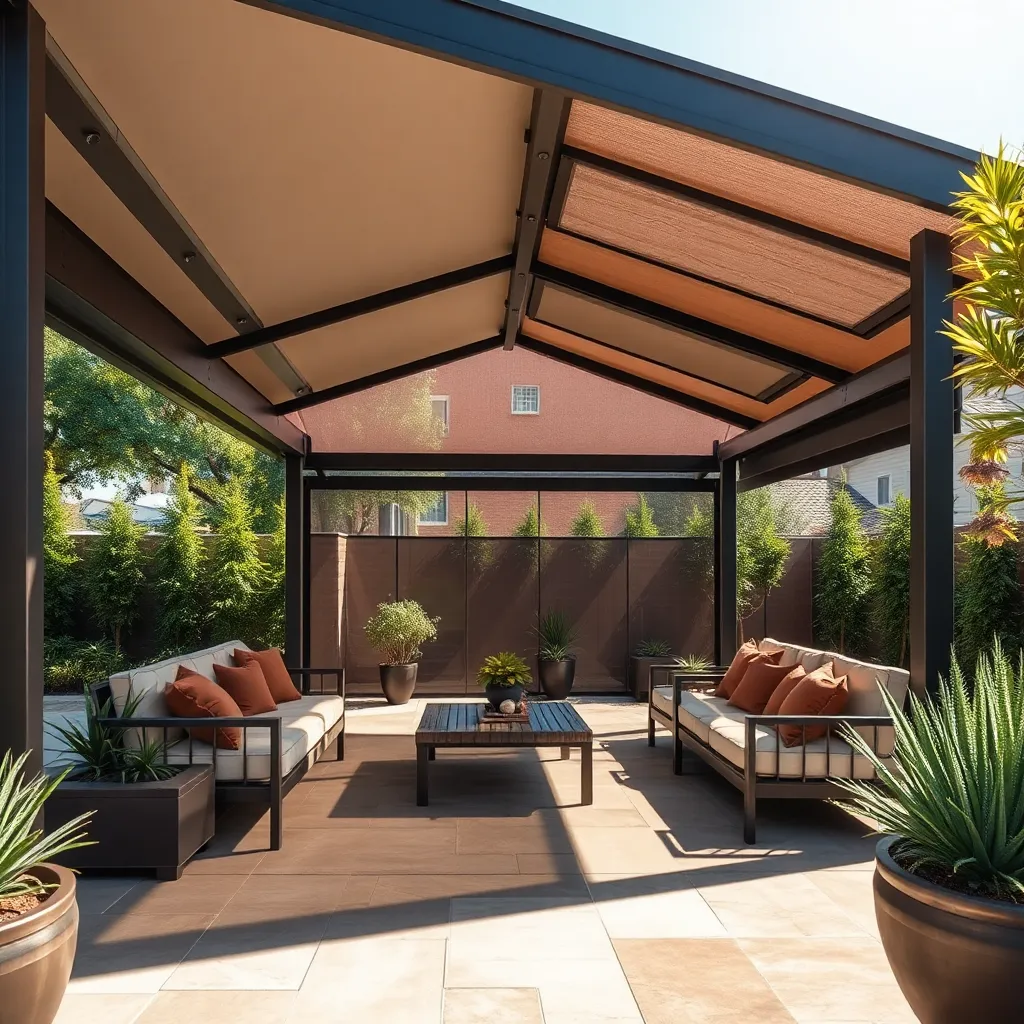
When choosing materials for your outdoor shelter, durability is key. Opt for weather-resistant woods like cedar or redwood, which naturally resist rot and insects. For a more modern look, consider using aluminum or galvanized steel, both of which offer excellent resistance to rust and require minimal maintenance. Ensure all metal components are powder-coated for added protection against the elements.
For the roof, opt for materials that offer both strength and insulation. Polycarbonate panels are a great choice, providing UV protection while allowing natural light to filter through. If you prefer a more traditional style, consider using fiberglass shingles or metal roofing, both of which offer superior longevity and performance in harsh weather conditions. Remember to incorporate design elements like overhangs or eaves to help shield the structure from rain and snow.
All-Weather Gazebos for Year-Round Use
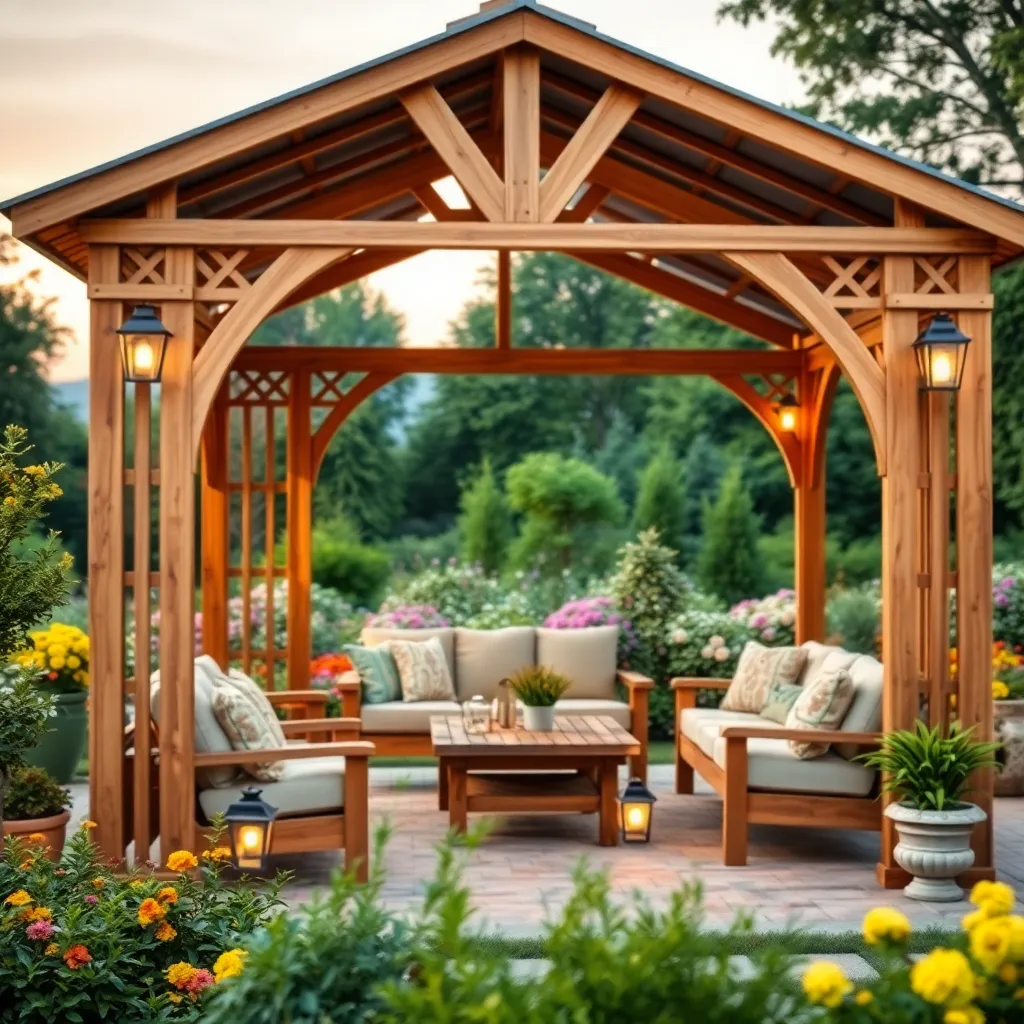
All-weather gazebos offer a versatile solution for year-round outdoor enjoyment. For durability, consider materials like powder-coated aluminum or treated wood, which provide excellent resistance against rust and rot. Opt for a gazebo with a polycarbonate or metal roof to withstand heavy snow loads and protect against harsh sunlight. Beginners should start with a pre-fabricated kit, which simplifies installation and minimizes construction errors.
For those looking to enhance their gazebo’s functionality, integrating features like retractable screens or roll-down sides can offer added protection against wind and rain. Advanced gardeners might consider adding solar-powered lighting to keep the space usable during evening hours. Ensure your gazebo has a solid, level foundation such as a concrete slab or pavers to prevent shifting and maintain stability throughout the seasons.
Sturdy Pergolas: Beauty Meets Strength
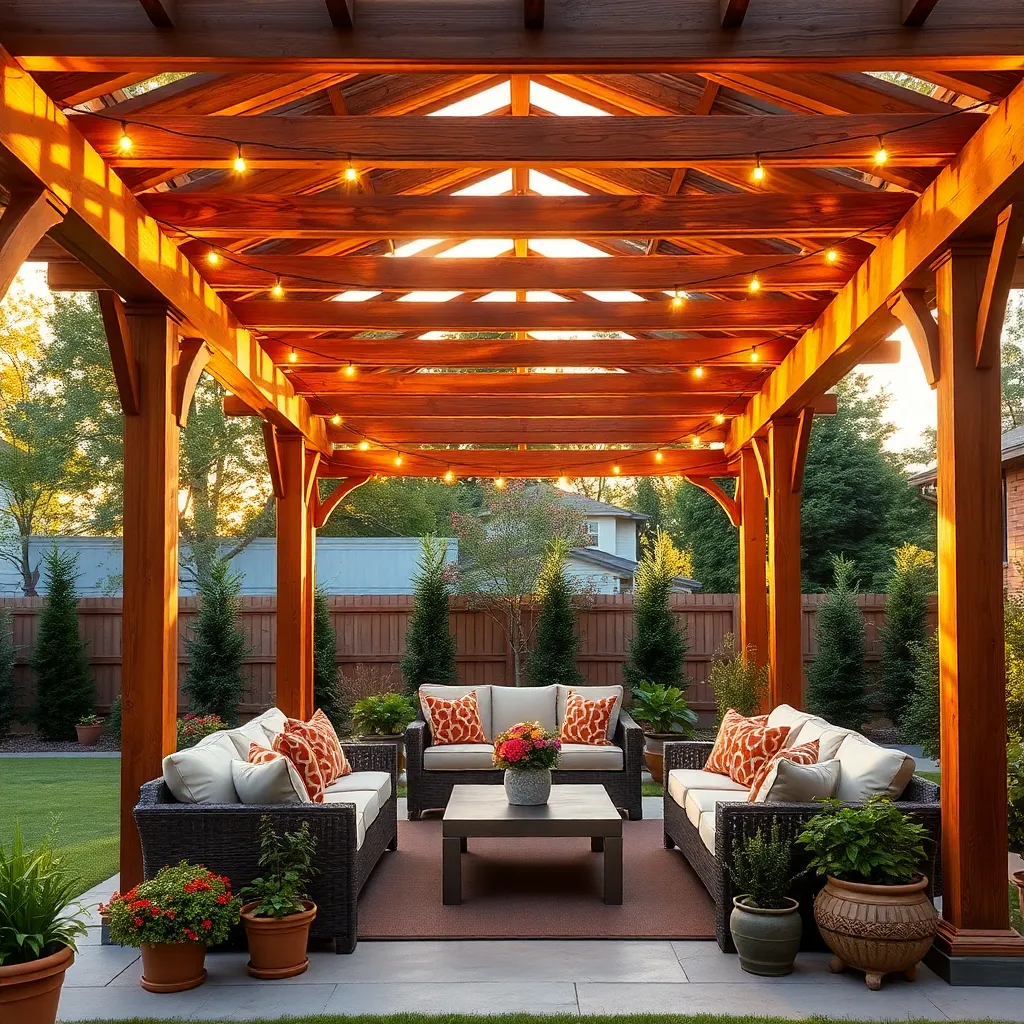
A pergola is not just an outdoor shelter; it’s an architectural feature that adds charm and functionality to any garden. To ensure your pergola stands the test of time, choose materials like cedar or pressure-treated wood, known for their durability and resistance to rot and insect damage. For a more modern look, consider aluminum or vinyl, both of which require minimal maintenance. When designing your pergola, opt for a structure with a solid foundation, such as concrete footings, to prevent shifting or settling over time.
To tailor your pergola to suit different climates, incorporate design elements like adjustable louvers or retractable canopies to control sunlight and rain exposure. Beginners should start with a basic square or rectangular design, which is easier to construct and can fit most backyards. For those ready to take on more advanced projects, consider adding climbing plants like wisteria or jasmine, which can provide additional shade and aesthetic appeal. Always ensure your pergola is built to local building codes and regulations for a safe and compliant outdoor retreat.
Versatile Awnings for Any Climate
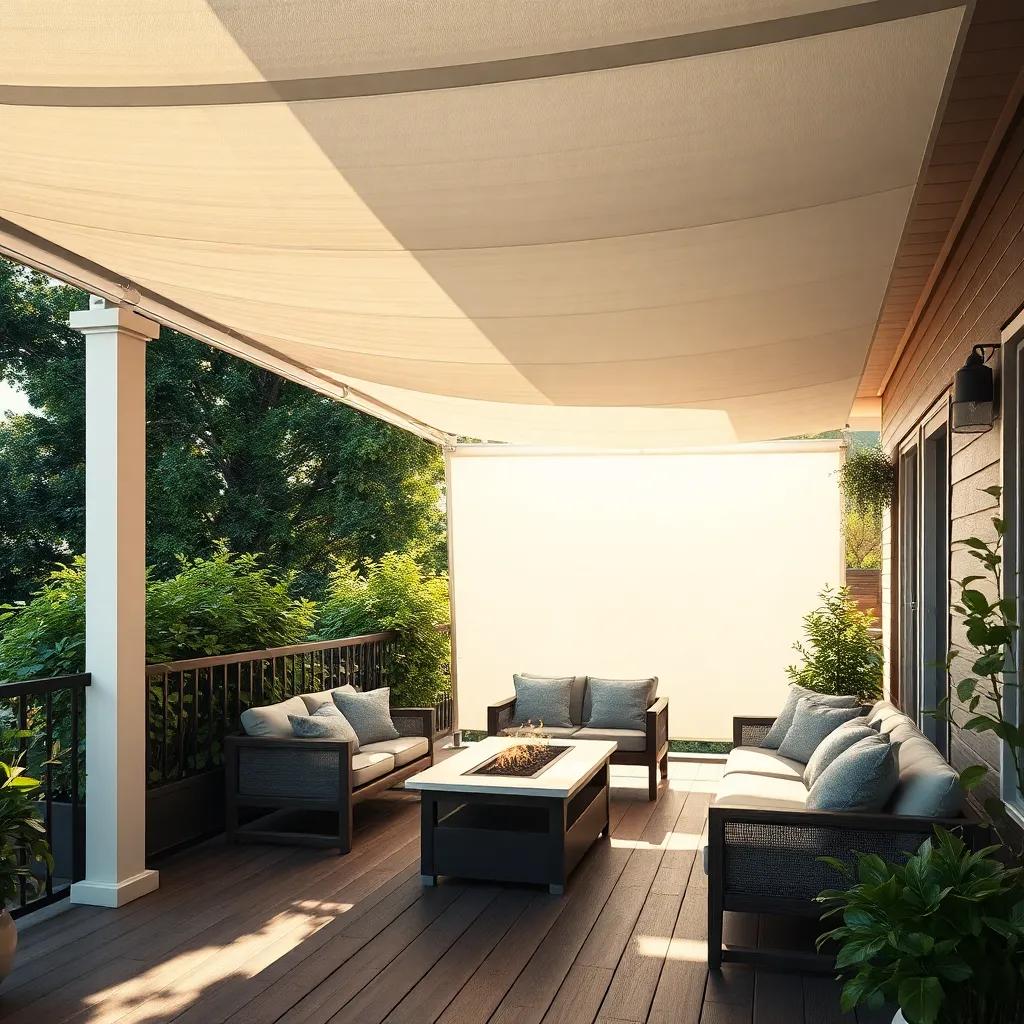
Versatile awnings provide a perfect combination of shade and style, adaptable to any climate. Select materials like aluminum, acrylic, or polycarbonate for durability and weather resistance. For beginners, a retractable awning offers flexibility, allowing you to extend or retract it based on your space needs and weather conditions. Ensure proper installation by securing the awning to a solid structure, such as a wall or roof, to withstand wind and rain.
Experienced DIY enthusiasts can explore motorized awnings with sensors that automatically adjust based on weather changes. Consider advanced features like UV protection and water resistance to enhance comfort and longevity. When designing your outdoor space, measure your area carefully to ensure the awning provides ample coverage without overwhelming the space. These installations not only enhance the aesthetic appeal of your home but also offer a practical solution for enjoying the outdoors year-round.
Innovative Canopy Designs for Protection
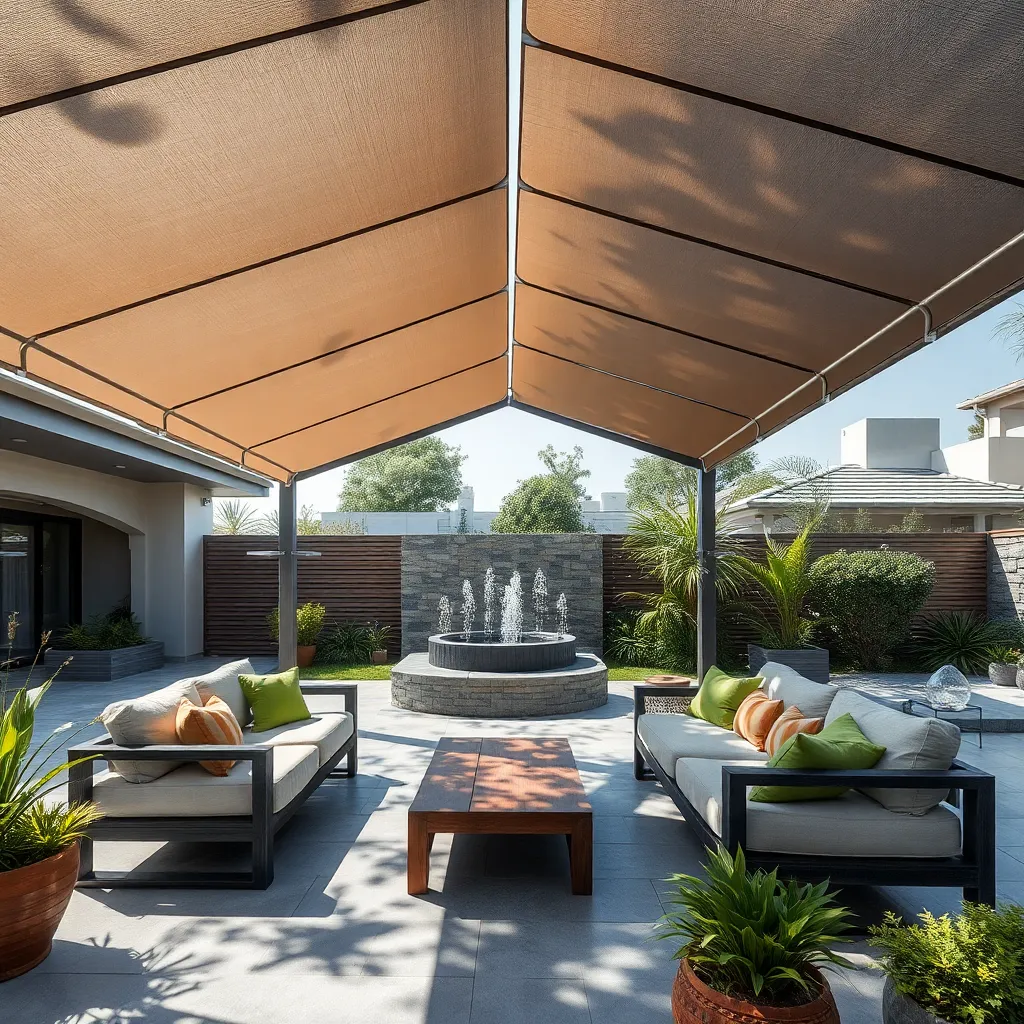
Exploring innovative canopy designs can dramatically enhance your outdoor space, providing both protection and style. Consider using materials like high-density polyethylene (HDPE) fabric, which provides excellent UV protection while allowing air to circulate, keeping the area cool. For a modern touch, use a cantilevered design, which offers unobstructed views and can be anchored with minimal support poles, maximizing usable space.
For homeowners looking for more advanced options, integrating technology into your canopy design can add convenience and durability. Motorized retractable canopies allow you to adjust the coverage based on weather conditions at the touch of a button. Ensure your structure is built with powder-coated aluminum or stainless steel frames to resist rust and withstand harsh weather conditions. For a DIY project, use modular components that allow for easy assembly and future expansion, making it adaptable to changing needs and styles.
Four-Season Tents for Every Adventure

Choosing the right four-season tent can transform your outdoor adventures, providing comfort and protection all year round. Opt for tents made with durable, weather-resistant materials like ripstop nylon or polyester, which can withstand harsh elements. Look for tents featuring a robust frame, preferably made of aluminum, which offers a sturdy yet lightweight structure capable of handling heavy snow loads or strong winds.
To ensure your tent remains a cozy retreat in any weather, consider models with double-walled construction to enhance insulation and reduce condensation. Incorporate a vestibule area for gear storage, maintaining the interior space clean and dry. Beginners should prioritize ease of setup, opting for tents with color-coded poles and clips, while advanced adventurers might explore tents with customizable ventilation options to optimize airflow in varying conditions.
Wind-Resistant Pavilions for Open Spaces
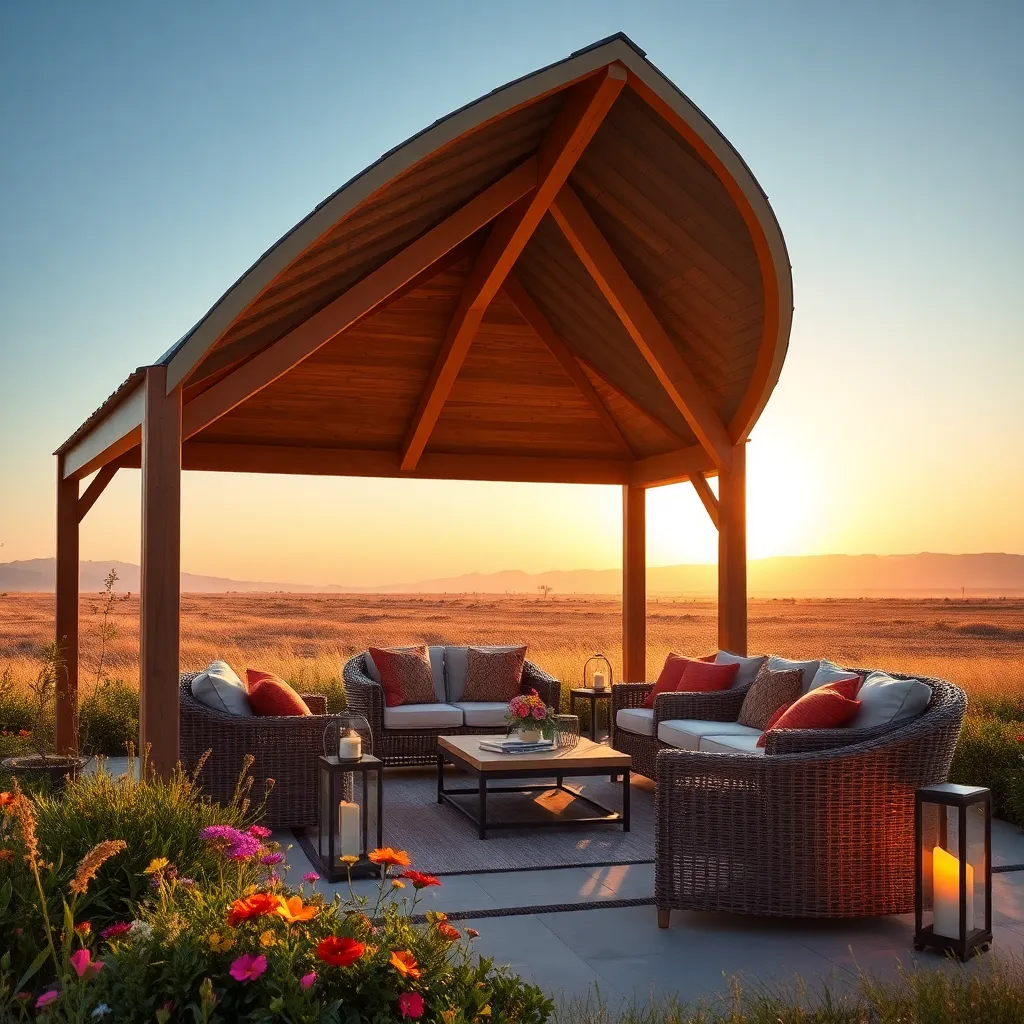
Choosing a wind-resistant pavilion for your open space can provide both style and durability. Opt for structures made from sturdy materials like galvanized steel or aluminum frames, which offer excellent resistance against high winds. Incorporating a sloped roof design not only helps in minimizing wind resistance but also aids in water runoff, protecting the structure from potential damage. For added stability, ensure the pavilion is properly anchored into a concrete base or through ground stakes, especially in areas prone to gusty weather.
Consider adding side panels or screens to shield against wind while maintaining an open-air feel. These can be made of breathable materials like mesh or heavy-duty canvas, which allow air to pass through without compromising protection. Additionally, integrating adjustable or removable panels provides flexibility for different weather conditions. Advanced gardeners might explore incorporating windbreaks, such as strategically placed hedges or fences, to further reduce wind impact and enhance the pavilion’s overall resilience. With these practical considerations, your outdoor pavilion can be a reliable and stylish retreat, year-round.
Hardy Greenhouses for Garden Enthusiasts
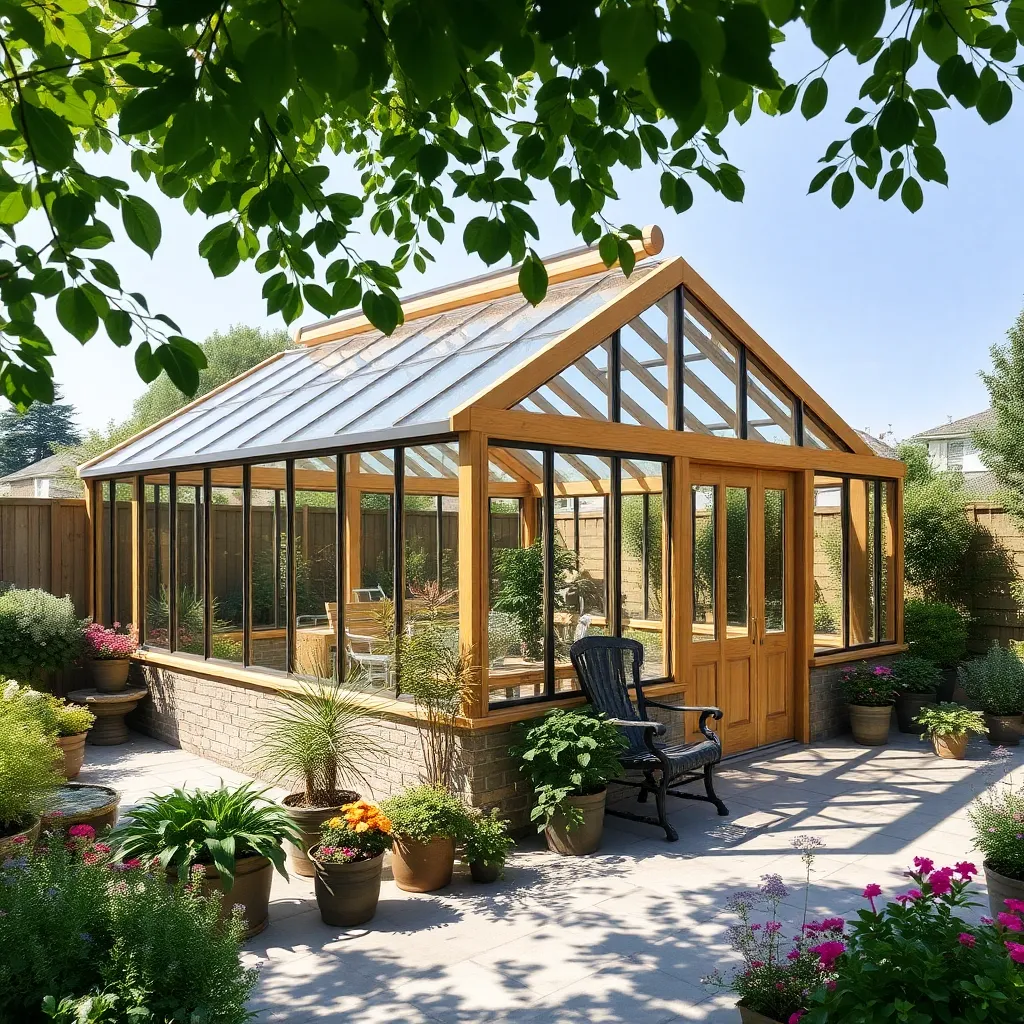
For garden enthusiasts seeking to extend their growing season, hardy greenhouses are an ideal solution. Constructing a greenhouse with durable materials such as polycarbonate panels and a sturdy aluminum or galvanized steel frame can withstand various weather conditions. Beginners should consider starting with a smaller structure, around 6×8 feet, to manage costs and maintenance easily. Ensure proper ventilation by incorporating roof vents or automatic vent openers to regulate temperature and humidity efficiently.
Advanced gardeners might opt for insulated glazing and thermal screens to enhance energy efficiency, particularly in colder climates. Incorporating raised beds within the greenhouse can help improve drainage and plant health while maximizing space. For those with limited space, a lean-to greenhouse attached to a south-facing wall can provide both stability and optimal sunlight exposure. By carefully selecting materials and design features, you can create a resilient and productive greenhouse tailored to your gardening needs.
Portable Shelters for On-the-Go Needs
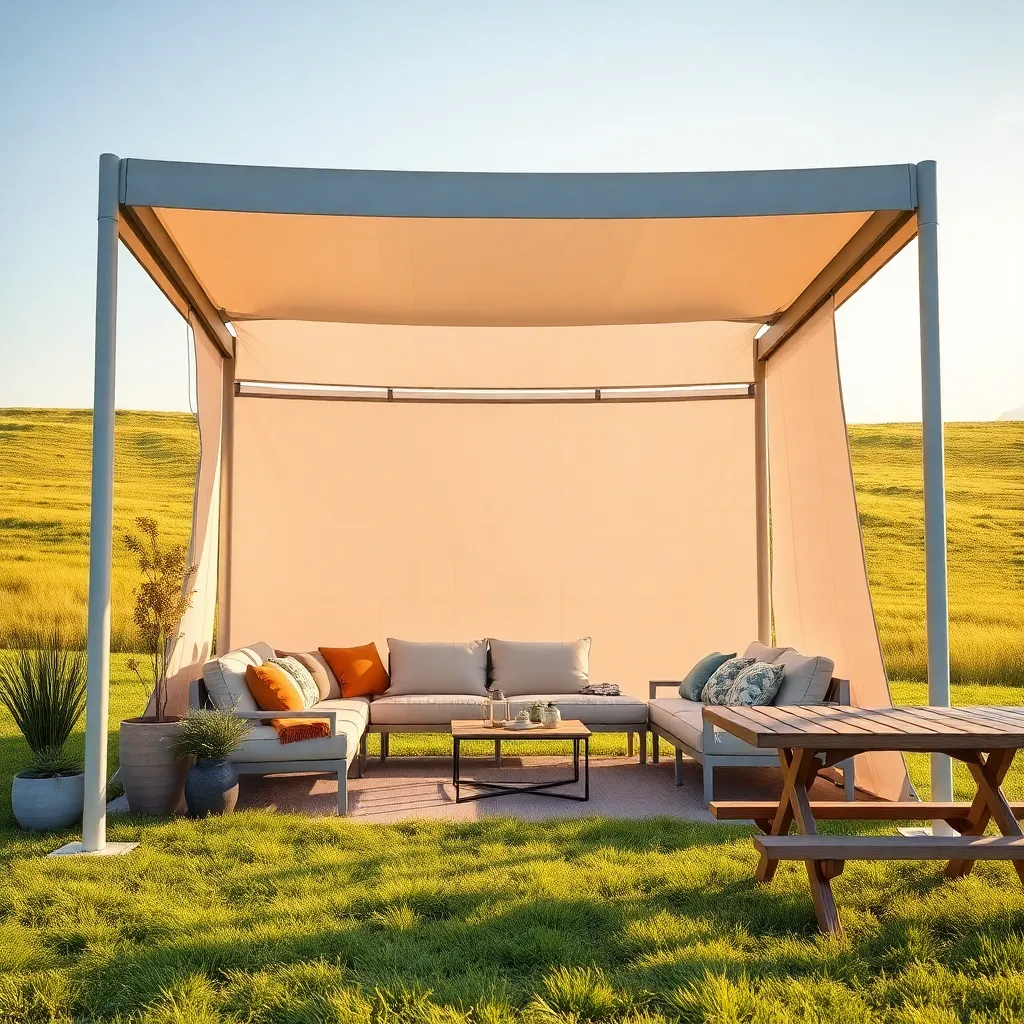
Portable shelters are an excellent solution for those who need flexible, weather-resistant coverage for outdoor activities. Consider investing in a pop-up canopy with **durable polyester fabric** and a **rust-resistant steel frame** for optimal longevity. These shelters are lightweight, making them easy to transport and set up, and they often come with adjustable legs to accommodate uneven terrain. For beginners, starting with a **10×10 foot model** is advisable, as it provides ample coverage without overwhelming the setup process.
When choosing a portable shelter, focus on design elements that enhance both functionality and durability. Look for canopies with **UV protection** and **water-resistant coatings** to withstand diverse weather conditions. Advanced options might include **sidewalls** for additional protection and **ventilation features** to maintain airflow during hot weather. For regular use, consider models with **weighted anchor bags** to secure the shelter against strong winds. With these practical features, your portable shelter will be a reliable companion for all your outdoor adventures.
Eco-Friendly Outdoor Structure Options
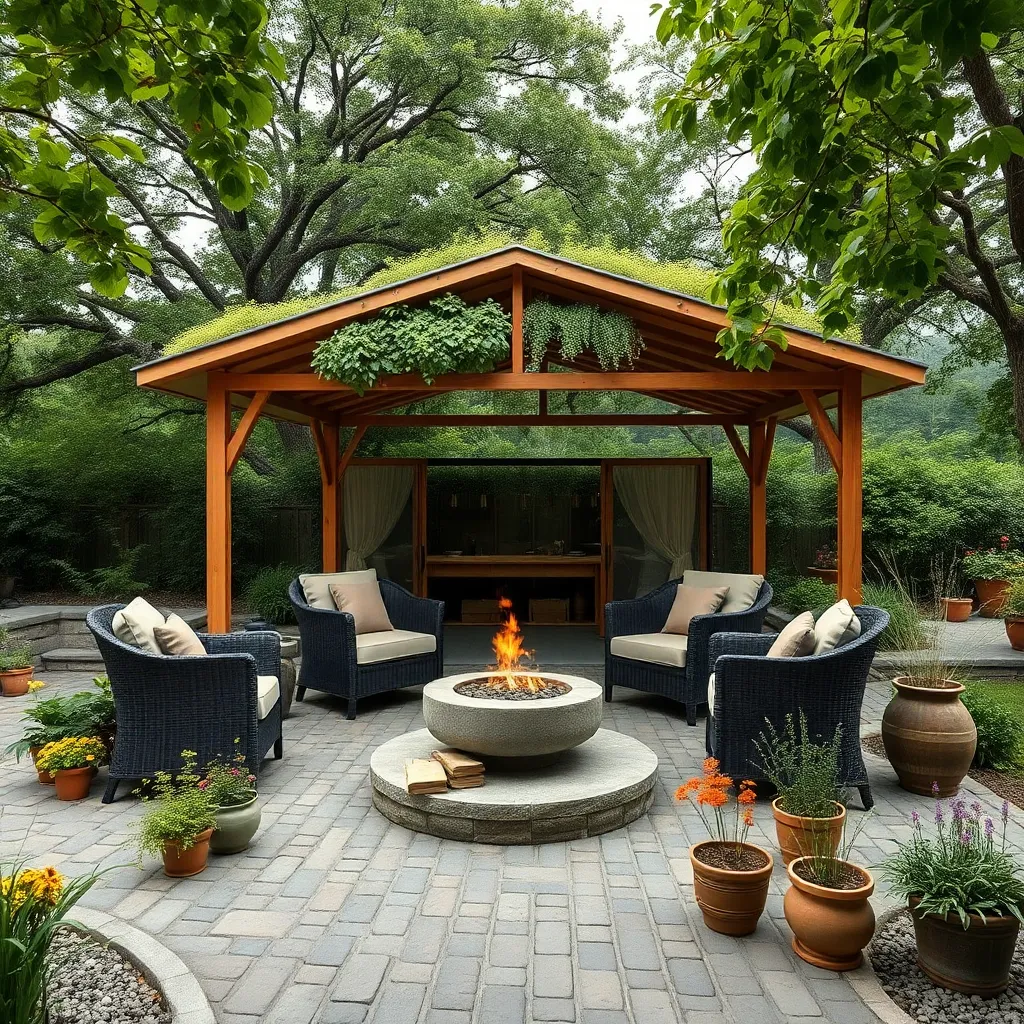
One of the most practical ways to embrace eco-friendly outdoor structures is by using sustainable materials like bamboo, reclaimed wood, or recycled metal. These materials not only reduce your carbon footprint but also offer durability and unique aesthetic appeal. For a simple setup, consider a pergola made from reclaimed wood with a green roof of drought-tolerant plants, which provides natural insulation and enhances your garden’s ecosystem. Beginners can start with smaller structures, ensuring they use non-toxic, weather-resistant finishes to extend the life of their shelter.
Advanced builders might opt for a more robust design, such as a solar-powered gazebo that utilizes photovoltaic panels integrated into the roof. This approach not only shelters your outdoor space but also generates clean energy, lowering your home’s electricity bills. When planning, focus on design elements that maximize natural light and ventilation, such as strategically placed openings and reflective surfaces. For added sustainability, ensure your structure is positioned to take advantage of natural wind patterns, providing a comfortable retreat in all seasons without additional energy consumption.
Conclusion: Creating Beautiful Outdoor Spaces
In exploring the “10 Weather-Resistant Outdoor Structures for All Seasons,” we’ve uncovered key relationship concepts that parallel the strength and adaptability of these structures. From the importance of a solid foundation and the need for flexibility, to the value of consistent maintenance and the ability to withstand life’s storms, these principles are essential for nurturing enduring relationships. Just like the protective pergolas, adaptable gazebos, and sturdy pavilions, relationships thrive when built with care, adaptability, and foresight.
As an actionable step, take a moment today to reflect on one area where your relationship could use a touch of maintenance. Whether it’s dedicating more quality time or improving communication, small steps lead to lasting improvements.
Bookmark this article as a handy guide for the future, reminding you of the durable structures and relationship insights that can fortify your bond in all seasons.
Remember, the key to relationship success lies in continual growth and adaptation. With the right tools and mindset, your relationship can weather any storm, emerging stronger and more resilient. Save this article now and let it be your compass on the journey to a flourishing partnership.

